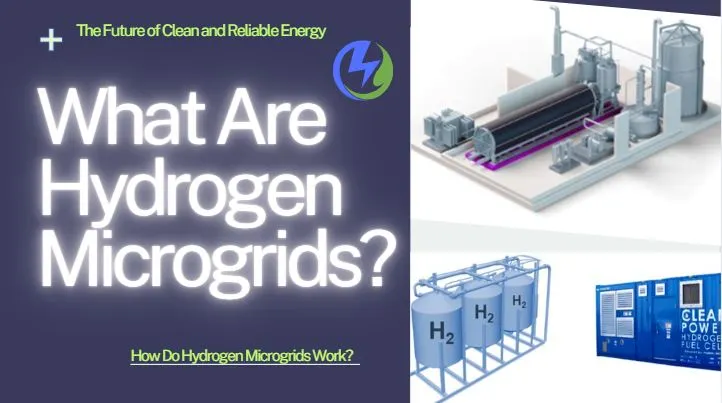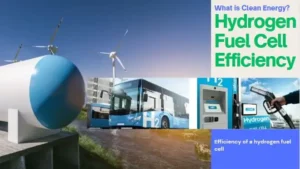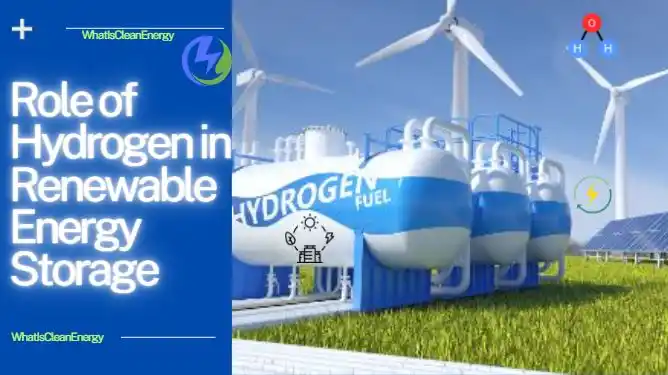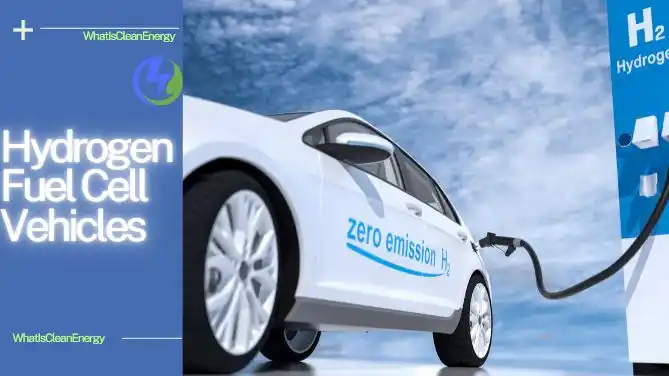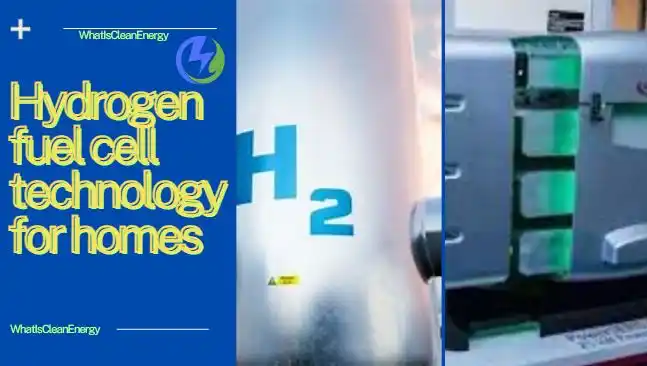Hydrogen microgrids are emerging as a revolutionary solution in the energy sector. They combine the benefits of microgrids with the clean energy potential of hydrogen. This article will explain hydrogen microgrids in simple terms, making it easy for beginners to understand. We’ll cover what they are, how they work, their benefits, and their future potential.
What Are Hydrogen Microgrids?
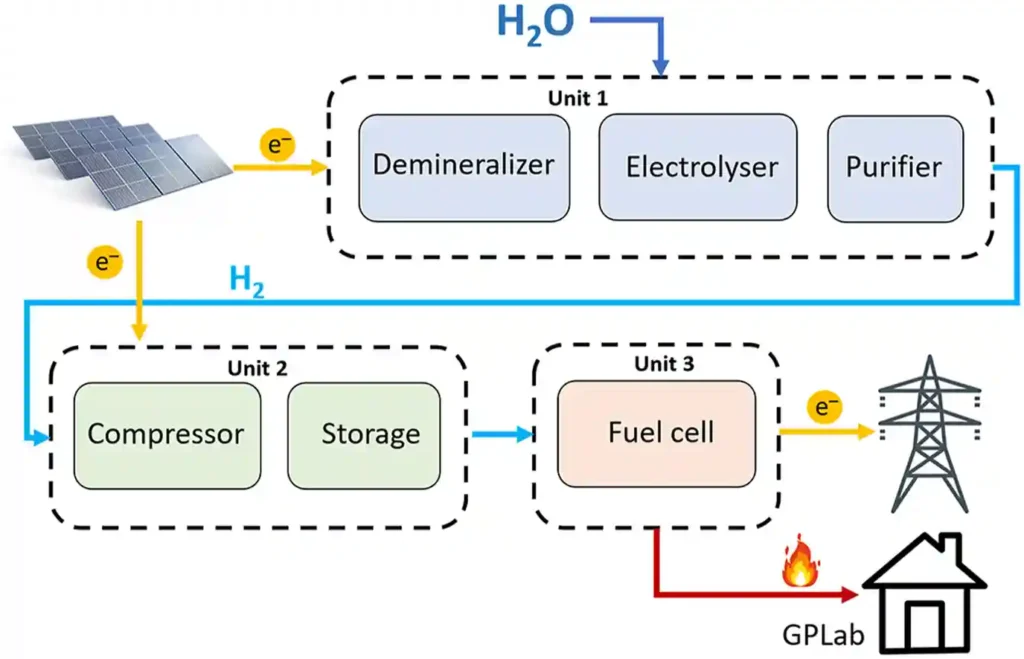
Hydrogen microgrids are localized energy systems that integrate hydrogen as a key component for generating, storing, and distributing energy. Unlike traditional microgrids, which might rely on solar panels, wind turbines, or batteries, hydrogen microgrids use hydrogen fuel cells or electrolyzers to produce electricity. These microgrids often use renewable energy sources, such as solar and wind, to produce hydrogen through electrolysis. This process splits water into hydrogen and oxygen using electricity.
What are Microgrids?
A microgrid is a small, self-sufficient energy system. It can operate independently or connect to the main power grid. Microgrids include energy sources like solar panels or wind turbines, battery storage, and software to manage energy flow. They are ideal for remote areas or places with unreliable power.
The Role of Hydrogen in microgrids
Hydrogen is a clean fuel that can be used in microgrids. It is produced by splitting water into hydrogen and oxygen using electricity, a process called electrolysis. When the electricity comes from renewable sources, the hydrogen produced is entirely green. Hydrogen can be stored and used to generate electricity when needed.
How Do Hydrogen Microgrids Work?

Energy Generation in Hydrogen microgrids
Hydrogen microgrids generate energy using renewable sources like solar panels or wind turbines. These sources convert sunlight or wind into electricity. This electricity is used to power homes, businesses, and other facilities within the microgrid.
Electrolysis Process
Excess renewable electricity is used to produce hydrogen via electrolysis. Electrolysis involves splitting water (H₂O) into hydrogen (H₂) and oxygen (O₂) using an electric current. This process takes place in an electrolyzer, which is a device specifically designed for this purpose.
Hydrogen Storage
The hydrogen produced through electrolysis is stored in tanks. Hydrogen storage is a critical component of the microgrid, as it allows the energy to be saved for later use. These storage tanks are designed to safely contain hydrogen, which is a highly flammable gas.
Energy Conversion
When renewable energy sources are not producing electricity (e.g., at night or during periods of low wind), the stored hydrogen can be converted back into electricity. This is done using fuel cells. Fuel cells combine hydrogen and oxygen to produce electricity, with water and heat as the only byproducts. This process is clean and efficient.
Energy Distribution
The electricity generated by the fuel cells is then distributed to the homes, businesses, and facilities within the microgrid. Advanced software and control systems manage the flow of electricity, ensuring that energy is distributed efficiently and reliably.
For example, tools like HOMER Pro are widely used for microgrid optimization. They simulate and optimize energy systems, helping to design cost-effective and efficient microgrids.
Integration with the Main Grid
Hydrogen microgrids can operate independently or be connected to the main power grid. When connected, they can exchange energy with the main grid, providing additional flexibility and reliability. This integration allows the microgrid to draw power from the main grid during high demand periods or supply excess power back to the grid.
Smart Grid Technology
Smart grid technology plays a crucial role in the operation of hydrogen microgrids. It involves using sensors, communication networks, and data analytics to monitor and control the energy flow within the microgrid. This technology ensures optimal performance, enhances reliability, and helps predict and manage energy demand.
Hydrogen microgrids work by generating energy from renewable sources, storing excess energy as hydrogen, and converting it back into electricity when needed. This process involves several key components, including renewable energy generators, electrolyzers, hydrogen storage tanks, and fuel cells. By understanding these components and their roles, we can appreciate the potential of hydrogen microgrids to provide clean, reliable, and sustainable energy.
Benefits of Hydrogen Microgrids
Hydrogen microgrids offer numerous advantages that make them a promising solution for clean and reliable energy. Let’s explore these benefits in detail.
Clean Energy Production
Hydrogen microgrids produce clean energy by using hydrogen as a fuel. When hydrogen is used in fuel cells, it combines with oxygen to produce electricity, with water vapor as the only byproduct. This process eliminates harmful emissions, making hydrogen microgrids an environmentally friendly option.
Energy Independence and Reliability
Hydrogen microgrids can operate independently of the main power grid. This makes them ideal for remote areas or regions with unreliable power supply. They provide a consistent and reliable energy source, reducing the risk of power outages and ensuring that essential services remain operational.
Scalability and Flexibility
Hydrogen microgrids are highly scalable. They can be designed to meet the energy needs of a single home, a community, or even an entire village. This flexibility allows them to be tailored to various applications, from residential to industrial use.
Economic Benefits
Using hydrogen microgrids can lead to significant economic benefits. They utilize renewable energy sources, which are becoming more cost-effective over time. Additionally, hydrogen microgrids can create jobs in the renewable energy sector, contributing to economic growth.
Disaster Resilience
Hydrogen microgrids are crucial for disaster resilience. In areas prone to natural disasters, hydrogen-powered microgrids can maintain energy supplies during emergencies. This ensures that critical services, such as hospitals and communication systems, remain operational.
Reduced Carbon Footprint
By replacing fossil fuels with hydrogen, microgrids help reduce the carbon footprint. Hydrogen production through electrolysis powered by renewable energy minimizes greenhouse gas emissions, significantly lowering the environmental impact compared to traditional energy sources.
Long-Term Energy Storage
Hydrogen is an excellent solution for long-term energy storage. Renewable energy sources like solar and wind are intermittent, meaning they don’t always produce energy when needed. Hydrogen can be stored in tanks and used later to generate electricity, ensuring a stable energy supply.
Enhanced Energy Security
Hydrogen microgrids enhance energy security by reducing dependence on centralized energy infrastructure. This decentralization makes energy systems more robust and less vulnerable to disruptions, whether from natural disasters or geopolitical issues.
Hydrogen microgrids offer a wide range of benefits, from clean energy production to enhanced energy security. They provide a reliable and scalable solution for various energy needs, making them ideal for both remote areas and urban settings. As technology advances and adoption increases, hydrogen microgrids will play a crucial role in our transition to a sustainable energy future. By understanding and supporting this technology, we can contribute to a cleaner and more resilient world.
Challenges of Hydrogen Microgrids
High Initial Costs to Setup Hydrogen Microgrids
| Challenge | Solution |
|---|---|
| Setting up hydrogen microgrids involves significant initial investment. The technology for producing, storing, and converting hydrogen is still developing, making it expensive. | As technology advances and becomes more widespread, costs are expected to decrease. Government incentives, subsidies, and private investments can also help offset initial costs. Research and development in cheaper materials and more efficient processes will further reduce expenses. |
Storage and Safety Concerns of Hydrogen Microgrids
| Challenge | Solution |
|---|---|
| Hydrogen is highly flammable and requires special storage solutions. Ensuring safe storage and handling is a significant challenge. | Advances in storage technology, such as high-pressure tanks and solid-state storage, are making hydrogen storage safer and more efficient. Proper training and safety protocols can mitigate risks. Continuous research into safer storage methods is essential. |
Infrastructure Development for Hydrogen Microgrids
| Challenge | Solution |
|---|---|
| Developing the infrastructure for hydrogen microgrids is a major hurdle. This includes building electrolysis plants, storage facilities, and distribution networks. | Governments and private companies are investing in infrastructure development. Public-private partnerships can accelerate the construction of necessary facilities. Standardizing regulations and building codes will also streamline the development process. |
Energy Efficiency
| Challenge | Solution |
|---|---|
| The process of producing hydrogen through electrolysis and converting it back to electricity can be less efficient compared to direct use of renewable energy. | Improving the efficiency of electrolyzers and fuel cells is a key area of research. Innovations in these technologies can enhance overall energy efficiency. Integrating hydrogen microgrids with other renewable energy systems can optimize energy use. |
Regulatory and Policy Barriers for Hydrogen Microgrids
| Challenge | Solution |
|---|---|
| Regulatory and policy frameworks for hydrogen microgrids are still evolving. Inconsistent regulations can hinder development and adoption. | Governments need to establish clear and supportive policies for hydrogen microgrids. International collaboration can help harmonize standards and regulations. Advocacy and education can raise awareness and support for policy changes. |
Public Perception and Acceptance of Hydrogen Technology
| Challenge | Solution |
|---|---|
| Public awareness and acceptance of hydrogen technology can be limited. Misconceptions about safety and effectiveness may slow adoption. | Public education campaigns can inform people about the benefits and safety of hydrogen microgrids. Demonstration projects and pilot programs can showcase their effectiveness and build public trust |
Hydrogen microgrids face several challenges, including high initial costs, storage and safety concerns, infrastructure development, energy efficiency, regulatory barriers, and public perception. However, with ongoing research, technological advancements, and supportive policies, these challenges can be overcome. By addressing these issues, hydrogen microgrids can become a vital part of our sustainable energy future, providing clean, reliable, and efficient power.
Case Studies and Real-World Examples of Hydrogen Microgrids
Several real-world examples demonstrate the scalability of hydrogen microgrids. For instance, the HydroGlen project in Scotland uses wind and solar energy to produce hydrogen, which is then stored and used to power rural farming communities.
This project showcases how hydrogen microgrids can be scaled to meet the energy needs of different regions and applications.
Future Potential of Hydrogen Microgrids
Technological Advancements
The future of hydrogen microgrids looks promising. Advances in technology are making hydrogen production and storage more efficient and cost-effective. Research is ongoing to improve fuel cells and other components of hydrogen microgrids.
Global Adoption of Hydrogen Microgrids
Countries around the world are recognizing the potential of hydrogen microgrids. They are investing in research and development to make this technology more accessible. As more countries adopt hydrogen microgrids, the technology will become more widespread and affordable.
Environmental Impact
Hydrogen microgrids have the potential to significantly reduce greenhouse gas emissions. By replacing fossil fuels with clean hydrogen, we can make a substantial impact on climate change. This will help create a more sustainable and environmentally friendly energy system.
Conclusion
Hydrogen microgrids represent a significant step forward in the quest for clean, reliable, and sustainable energy. They combine the benefits of microgrids with the clean energy potential of hydrogen. While there are challenges to overcome, the future looks bright for hydrogen microgrids. As technology advances and adoption increases, hydrogen microgrids will play a crucial role in our energy future. By understanding and supporting this technology, we can contribute to a cleaner and more sustainable world.
Frequently Asked Questions (FAQs)
What is a hydrogen microgrid?
A hydrogen microgrid is a localized energy system that uses hydrogen as a key energy carrier. It typically involves hydrogen production (via electrolysis), storage, and re-electrification through fuel cells or combustion to provide electricity.
What are the three types of microgrids?
The three main types of microgrids are Community Microgrids, Islanded Microgrids and Grid-Connected Microgrids.
Community Microgrids: Serve specific communities, such as neighborhoods or campuses.
Islanded Microgrids: Operate independently of the main grid.
Grid-Connected Microgrids: Work in parallel with the main grid but can disconnect when needed.
What is the world’s largest green hydrogen microgrid project?
One of the world’s largest green hydrogen microgrid projects is India’s initiative at Simhadri, near Visakhapatnam. It uses a standalone fuel-cell-based microgrid with hydrogen production powered by a floating solar project.
What is the re-electrification of hydrogen?
Re-electrification of hydrogen refers to converting stored hydrogen back into electricity using fuel cells or combustion turbines. This process is crucial for energy storage systems that balance renewable energy supply and demand.
How is hydrogen converted back to electricity?
Hydrogen is converted back to electricity primarily through:
Combustion: Hydrogen can be burned in turbines or engines to generate electricity.
Fuel Cells: Electrochemical reactions between hydrogen and oxygen produce electricity, water, and heat.
Can hydrogen replace EVs?
Hydrogen-powered vehicles (using fuel cells) offer faster refueling and longer ranges compared to battery EVs. However, challenges like infrastructure and cost make widespread replacement unlikely in the near term.
Can hydrogen power the grid?
Yes, hydrogen can power the grid by acting as a long-duration energy storage solution. It stores excess renewable energy and provides electricity during demand spikes or renewable energy shortages.

